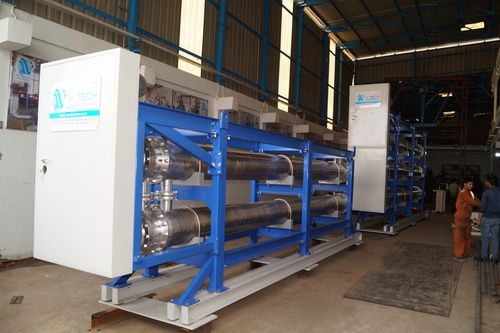- Home Page
- Company Profile
-
Technologies
- Oilseed Preparatory Plants
- Oilseed Extraction Plants
- Crude Oil Filtration Plants
- Edible Oil Refining Plant
- Soya Lecithin Plants
- Conveying Systems
- Plant Heat Exchanger
- Solvent Extraction Plant
- Expander Machine
- Seed Cleaning Machinery
- Distillation Plant
- Bucket Elevators
- Fractionation Plant
- Dewaxing Plant
- Downloads
- Contact Us
Shell and Tube Heat Exchangers
500000 INR/Set
Product Details:
- Temperature High-temperature
- Usage Industrial
- Condition New
- Structure Plate Heat Exchanger
- Size Standard
- Product Type Shell and Tube Heat Exchangers
- Color Silver
- Click to View more
X
Shell and Tube Heat Exchangers Price And Quantity
- 500000 INR/Set
- 1 , , Set
Shell and Tube Heat Exchangers Product Specifications
- High-temperature
- Standard
- Shell and Tube Heat Exchangers
- Industrial
- New
- Silver
- Plate Heat Exchanger
Shell and Tube Heat Exchangers Trade Information
- 7-15 Days
Product Description
Shell and tube heat exchangers are widely used in various industries for efficient heat transfer between two fluids. They consist of a bundle of tubes enclosed within a cylindrical shell. One fluid flows inside the tubes (the tube-side fluid), while the other flows outside the tubes within the shell (the shell-side fluid). Shell and tube heat exchangers offer high heat transfer efficiency, versatility, and durability, making them suitable for a wide range of applications.
FAQs:
Q: What is a shell and tube heat exchanger?
A: A shell and tube heat exchanger is a type of heat exchanger used to transfer heat between two fluids that are at different temperatures. It consists of a bundle of tubes arranged inside a cylindrical shell. One fluid flows through the tubes (the tube-side fluid), while the other flows around the tubes within the shell (the shell-side fluid). Heat is transferred between the fluids through the tube walls, facilitating efficient heat exchange.
Q: How does a shell and tube heat exchanger work?
A: Shell and tube heat exchangers work on the principle of heat transfer through conduction. The hot fluid enters the shell-side of the exchanger and flows over the outer surface of the tubes. Simultaneously, the cold fluid flows through the tubes. Heat is transferred from the hot fluid to the tube walls and then to the cold fluid inside the tubes. The fluids remain separate, allowing heat exchange without mixing.
Q: What are the advantages of using shell and tube heat exchangers?
A: Shell and tube heat exchangers offer several advantages. They provide high heat transfer efficiency due to the large surface area provided by the tube bundle. The design allows for versatility in handling various fluid types, pressures, and temperature ranges. Shell and tube heat exchangers are durable, can withstand high operating pressures, and are suitable for corrosive environments. They also allow for easy maintenance, inspection, and cleaning.
Q: Where are shell and tube heat exchangers used?
A: Shell and tube heat exchangers find applications in numerous industries. They are commonly used in power plants, oil refineries, chemical processing plants, HVAC systems, food and beverage production, pharmaceuticals, and many other industrial processes. They are suitable for applications involving heating or cooling fluids, heat recovery, condensing or vaporizing liquids, or maintaining temperature control in various processes.
Q: Can shell and tube heat exchangers handle high-pressure applications?
A: Yes, shell and tube heat exchangers are capable of handling high-pressure applications. The robust construction of the shell and tube design allows them to withstand high pressures and temperature differentials. The choice of materials and the design specifications can be tailored to meet the specific pressure requirements of the application.
Q: Are shell and tube heat exchangers customizable for different fluids and operating conditions?
A: Yes, shell and tube heat exchangers are highly customizable to suit different fluids, operating conditions, and industry-specific requirements. They can be designed with various tube diameters, lengths, and configurations to optimize heat transfer for specific fluids and temperature ranges. The materials of construction, such as stainless steel, copper, or titanium, can be selected to handle corrosive or high-temperature fluids.
FAQs of Shell and Tube Heat Exchangers:
Q: What is a Shell and Tube Heat Exchanger?
A: A Shell and Tube Heat Exchanger is a type of heat exchanger that transfers heat between two fluids through a series of tubes within a cylindrical shell.Q: What are the benefits of using a Shell and Tube Heat Exchanger?
A: A Shell and Tube Heat Exchanger offers efficient heat transfer, durability, and versatility, making it a reliable solution for various industrial applications.Q: What makes this Shell and Tube Heat Exchanger different from others?
A: Our Shell and Tube Heat Exchanger comes in a standard size and new condition, with a sleek silver color. It is built with precision and expertise, ensuring optimal performance and maximum productivity.Q: Can this product handle high-temperature usage?
A: Yes, this Shell and Tube Heat Exchanger is designed for high-temperature usage, making it ideal for various industrial applications.Q: What is the business type of the supplier?
A: The supplier of this Shell and Tube Heat Exchanger is an exporter, fabricator, manufacturer, and supplier, offering top-quality products and services to meet your industrial needs.Tell us about your requirement

Price:
Quantity
Select Unit
- 50
- 100
- 200
- 250
- 500
- 1000+
Additional detail
Mobile number
Email
Other Products in 'Plant Heat Exchanger' category
"We are looking for Export Inquiries"

 English
English Spanish
Spanish French
French German
German Italian
Italian Chinese (Simplified)
Chinese (Simplified) Japanese
Japanese Korean
Korean Arabic
Arabic Portuguese
Portuguese





